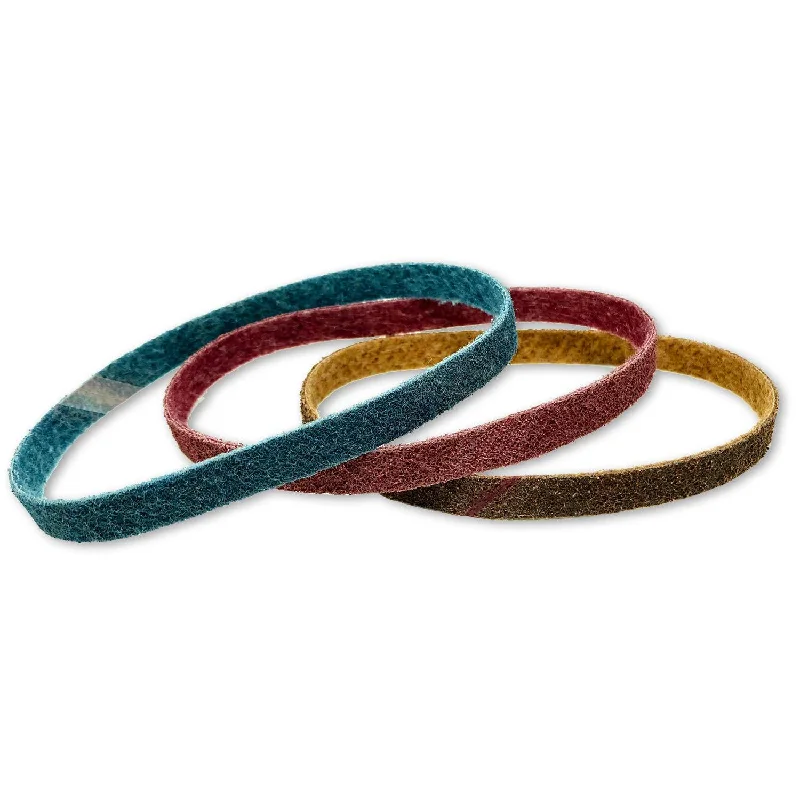Our premium-quality industrial-grade belts are long-lasting and produce a great finish for steel, stainless steel, and aluminum surfaces.
1” x 30” Non-Woven Surface Conditioning Belt Product Details
- Available in 1 pack and 3 packs.
- Assorted grits pack contains 1 each of coarse, medium, and fine grit belts
- Resin bonded aluminum oxide grain evenly dispersed on open web nylon mesh fibers delivers consistent results
- Flexible, low stretch material with reinforced backing resists loading and heat build up for maximum belt life
- IMPORTANT NOTE FOR HARBOR FREIGHT 1 X 30 BELT SANDER USERS: These belts are thick and stiff. Your sander may not be powerful enough to run these belts, though some customers have success softening them up by flexing prior to use.
- Hand Built in the USA
Grit Equivalents Of Our Surface Conditioning Belts
Non-woven belts aren’t rated by grit, because there technically isn’t any grit on the belt. Nevertheless, you can expect certain surface conditioning belts to work similar to certain grit sizes. Below are the grit equivalents of our surface conditioning belts.
- Coarse (Brown) is equivalent to P120-P150
- Medium (Maroon) is equivalent to P150-P180
- Fine (Blue) is equivalent to P240-P280
What Are Surface Conditioning Belts & What Are They Used For?
Non-woven belts and surface conditioning belts are terms used interchangeably that refer to the same type of belt. Surface conditioning or non-woven belts are used to deburr, clean, blend, and finish contours, edges on irregular aluminum, stainless steel, or steel surfaces.
Surface conditioning belts are commonly used in knife making to achieve an even, satin finish on blades. You’ll end up saving a lot of time over trying to hand sand a mirror finish.
If you’re using surface conditioning belts for the first time, you’ll want to keep a few things in mind. First, you’ll want to use light to medium pressure with these belts. The coarse belts especially require light pressure. If you apply too much pressure, you’ll remove too much material too fast. You’ll also want to follow a proper grit sequence from coarse to medium to fin and super fine.

